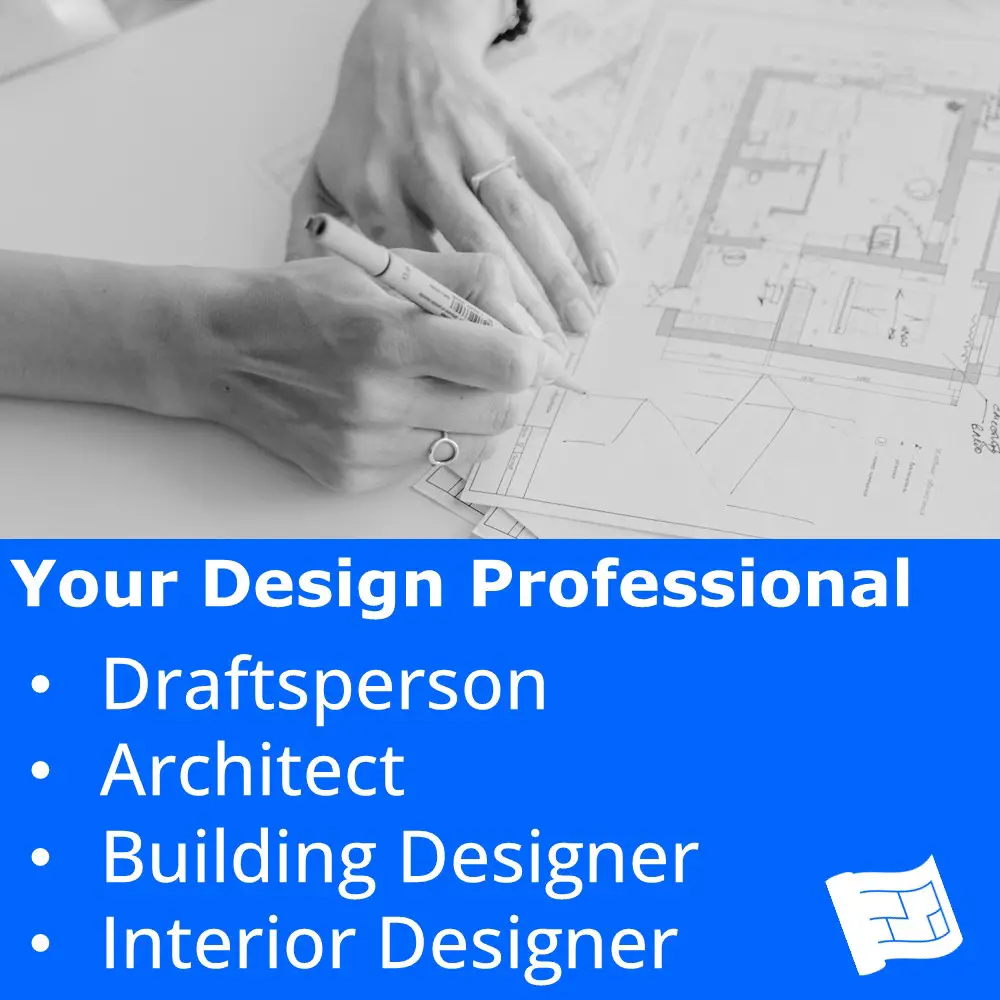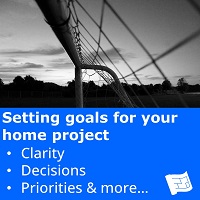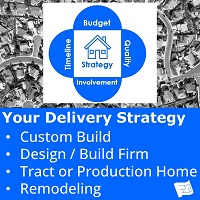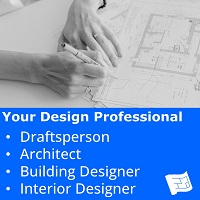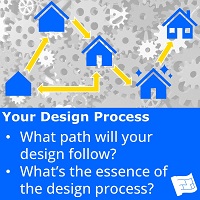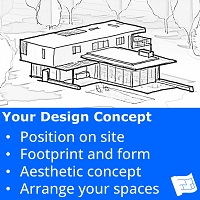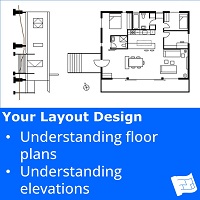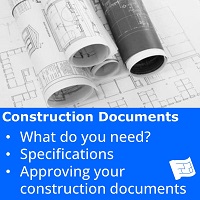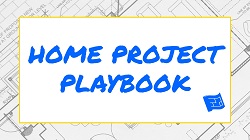- Home
- Project Playbook
- Choosing your design professional
Choosing Your Design Professional
You might be surprised to see how far down the list 'Choosing Your Design Professional' appears in the steps in the Project Playbook.
For many homeowners, a call to either a builder or designer is one of the first things they do when they start their project.
There's nothing wrong with this. You'll most likely pick up some valuable information from initial consultations but don't make the mistake of hiring your designer before you've spent some time on preparing for your project.
That's what the Home Project Playbook is here for after all 😊
One of the key decisions you’ll be making is whether or not to engage a design professional, and what you want your design professional to do for you.
Drawing vs Designing
Before we start I want to point out something that might not be immediately obvious to you as a homeowner. That's the difference between drawing and designing. You might decide you only want help to draw (or draft) your design, or you might want help with the design itself.
Drawing
Drawing (or drafting as it's known in the building industry) is the technical process of creating house plans, such as floor plans and elevations. Producing the drawings required for a new build or renovation project requires knowledge and skill but focuses on documenting what is to be built, not creating the design.
Designing
Designing, on the other hand, is an interpretative process where your designer starts from your needs, desires, site and climate to craft a home that's right for you, functionally and emotionally. It involves manipulating form, volumes, light, and materials to create a home that enhances your lifestyle and evokes a sense of comfort and well-being.

Designer Danger
It's important to realise that while finding a good design professional that is right for your project is an essential key to the success of your project, it doesn't mean that you have no role in your project. Don't hire a designer then just sit back and relinquish control.
Be wary of deferring all your decisions to your designer. Let them help you with the design and create the drawings, but be sure to be informed by doing some work to understand what you want and what's possible. To get the best results it's vital to participate in the process rather than being a passenger.
Following the steps in the Project Playbook will put you in a great position to
Now let's move on to a list of the professions which can help you with your home design.
We discussed some options for design professionals in the Project Delivery Strategy topic. Here's a fuller discussion of the types of 'designer' available to you.
Be your own designer and design your own home
You may decide that you want to design you home yourself or yourselves. This may be because you want to save money, or that you want close control over the design.
Those two reasons are valid, and yet they also have a flip side.
It could be that while you'll pay fees for your design, the fee you pay an architect or designer will be a worthwhile investment, resulting in a better designed home that’s worth more, or an efficiently designed home that costs you less to build.
When it comes to control, don’t forget that you still have ultimate control over your home design when you’re working with a design professional. A good design professional will welcome your ideas (including any design you've drawn up yourself) and contribute their own and you'll collaborate on the design.

You might need an architect
If you’re planning to design your own home, check if your state requires an architect to stamp your plans for the permitting process. Some architects may not be willing to stamp plans which they have not had a part in designing.
Call in a draftsperson
A draftsperson is skilled in producing drawings to the standards required to be understood by builders and to get a building permit.
There is no specific educational requirement, and no license is required however they can elect to be certified through the Amercian Design Drafting Association.
They are not qualified in 'design' as such. This means they are not formally qualified to advise on design, structural issues or building code matters. Having said that, since they are working with house plans all day, many build up an eye for design and the knowledge to recognize when a structural or code check is required and can advise how to go about this.
They are the perfect design professional to get on board if you have your own design ideas and know what you want. A draftsperson will take your ideas and get them drawn up as required.
At an average cost per project of $1,800 they are great value for money.
Engage an architect
An architect is a very highly qualified design professional. They are degree qualified and following a few years experience must then take professional exams to gain their license to practice architecture.
Many
people have the perception that architects are only for expensive
'designer' projects. If you are doing a modest project it is definitely
worth making contact with some architects to discuss your project and
see how they could help you with your home. Don't rule an architect out
because you think you can't afford it. Get more information specific
to architects working on your project before you make a decision on
which design professional to choose.
Architects can design your home, provide your drawings and handle your building permit application. They are familiar with all the codes and regulations and will call in a structural engineer when necessary. You can also retain them to help you through the tender and bidding stage and further to the building stage to manage your project.
This AIA brochure called 'You & Your Architect' takes you through a few basics about working with an architect.
On a project for a $200,000 home, here's how the fee of an architect might be broken down over the different phases of the project.
| Project phase | % | Amount |
|---|---|---|
| Schematic design | 15% | $3,000 |
| Design development | 20% | $4,000 |
| Construction documents | 40% | $8,000 |
| Bidding and negotiating | 5% | $1,000 |
| Construction phase | 20% | $4,000 |
| Total fee | $20,000 |
Get a building designer on board
Building designers, as the name suggests are skilled in the design and drawing of homes.
There
is no specific educational requirement, and no license is required.
some may have attended training programs, others may come from other
backgrounds such as building and learnt on the job. The American Institute of Building Design runs a certification program.
Similar to architects they are familiar with all the codes and regulations and will call in a structural engineer when necessary.
If you are thinking of hiring an architect, it's well worth including some building designers on your design professional short list.
In addition
to design services, some of them will offer their services through the
tender stage and can help you during the construction phase if this
works for you. Any additional services will depend on your building
designer.
A building designer is less expensive than an architect and may well be able to provide all the services you need.
Get help from an interior designer
An interior designer is skilled in the functional and aesthetic design of space.
Many have attended degree level training programs and they can elect to be certified by the American Society of Interior Designers.
They are ideal to have on board if you are doing an internal remodel with no addition. They can design spaces that are code compliant and will engage a structural engineer if required. They can also produce your permit and construction drawings.
Naturally, they can also look
after the detailed design such as your lighting plan and kitchen design,
and the many selections you'll make for your home such as flooring and
wall tiles and taps and toilets etc.
They are also an ideal person to engage if you want to reduce your day to day involvement to a minimum. You could have some initial meetings with an interior designer, give your approval on the designs, then hand over the project to them to manage.
So, there you have it. Taking the time to research each of the design professionals available to you will help you with choosing your design professional, choosing which is the best for you and your project.
The Playbook is a work in progress. Anything without a link is coming soon.
Phase 1 - Project Preparation
Phase 2 - Design Preparation
Phase 3 - Design
Phase 4 - Construction
Your Contractor / Builder
Your Contract
Building Your Home

